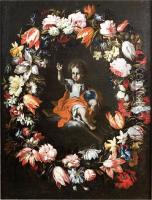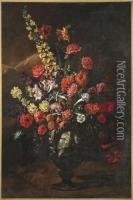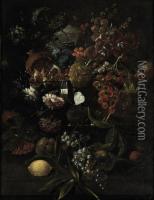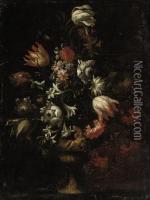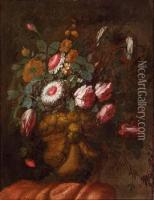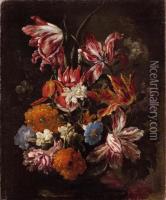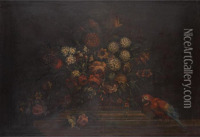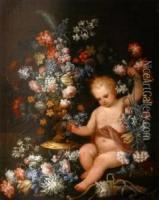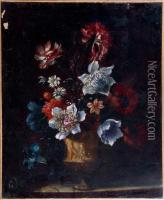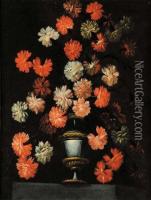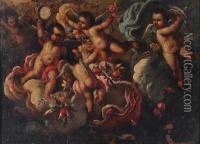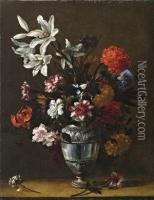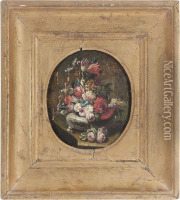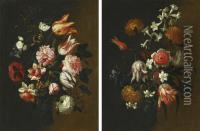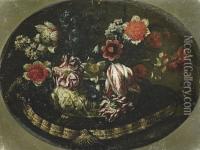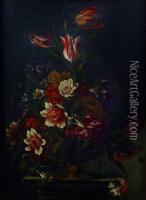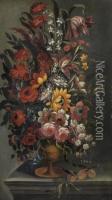Mario Nuzzi Mario Dei Fiori Paintings
Mario Nuzzi, also known as Mario Dei Fiori, was an Italian Baroque painter, renowned for his detailed and realistic depictions of flower arrangements and still life compositions. Born in 1603 in Penna in Teverina, near Terni, he began his artistic career in the workshop of his uncle, Pietro Paolo Nuzzi. Mario quickly became known for his skill in painting flowers, which earned him the nickname 'Mario Dei Fiori' or 'Mario of the Flowers.' His work was highly sought after by patrons who appreciated the delicate and intricate way he captured the beauty of flora.
Nuzzi's paintings often included a variety of flowers in a single composition, creating a harmonious and balanced bouquet that was both aesthetically pleasing and botanically accurate. He was particularly adept at depicting the textures and subtleties of each petal and leaf, bringing a sense of vitality to his still life canvases.
Working primarily in Rome, Mario Dei Fiori became part of the vibrant artistic community there and was influenced by the works of other Baroque artists. Despite the popularity of religious and historical subjects during the Baroque period, Nuzzi specialized in the still life genre, which was increasingly appreciated for its beauty and technical challenges.
Throughout his career, Nuzzi received commissions from notable patrons including members of the Roman aristocracy and the Vatican. His works were often paired with figure paintings by other artists, where his floral arrangements would serve as decorative elements in larger compositions.
Mario Nuzzi's contribution to the development of the still life genre was significant. His paintings not only reflected the scientific interest in botany at the time but also served as a symbol of wealth and sophistication among his patrons. His legacy continued as he influenced subsequent generations of still life painters in Italy and beyond.
Mario Dei Fiori passed away in 1673, leaving behind a body of work that continues to be admired for its elegance and botanical precision. His paintings can be found in numerous museum collections and are considered exemplary works of the Italian Baroque still life tradition.
